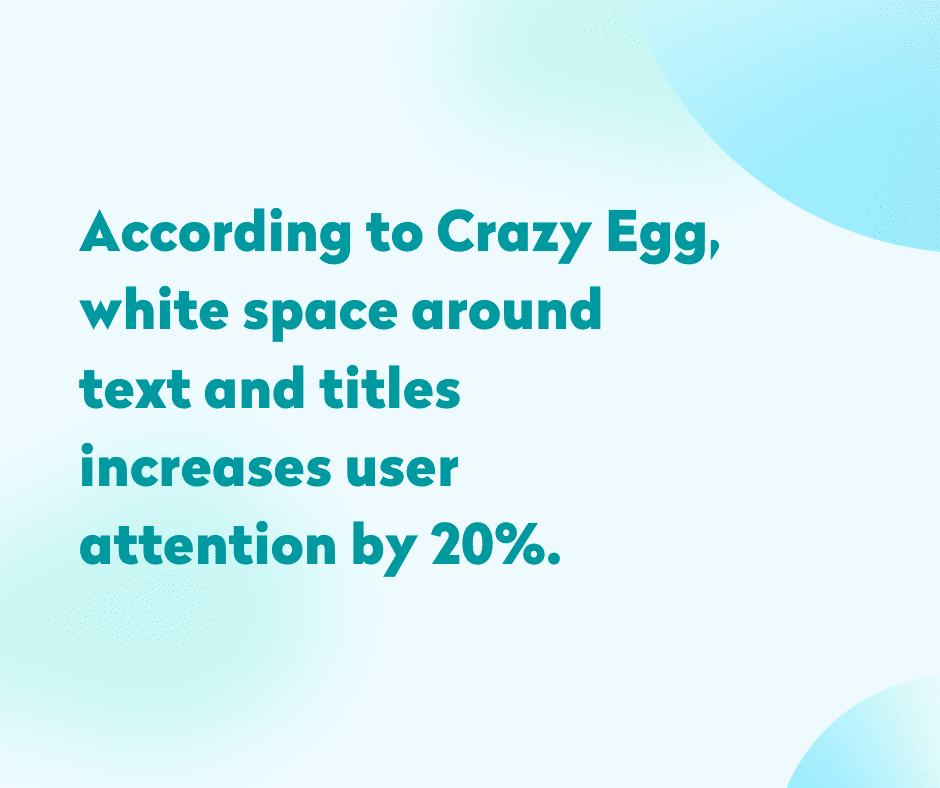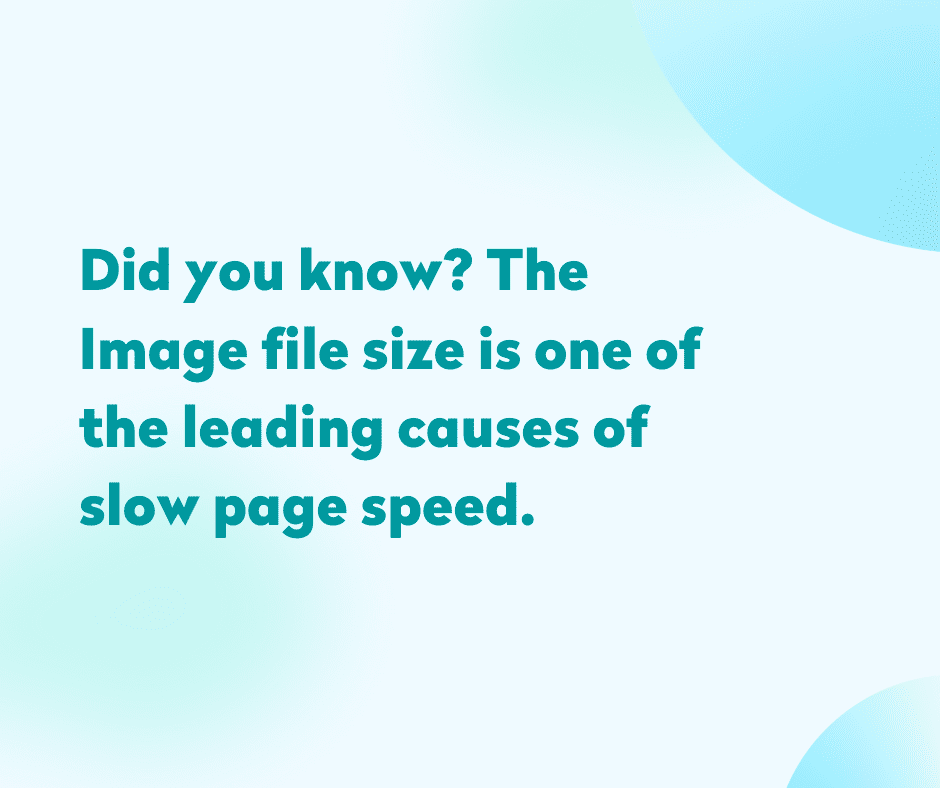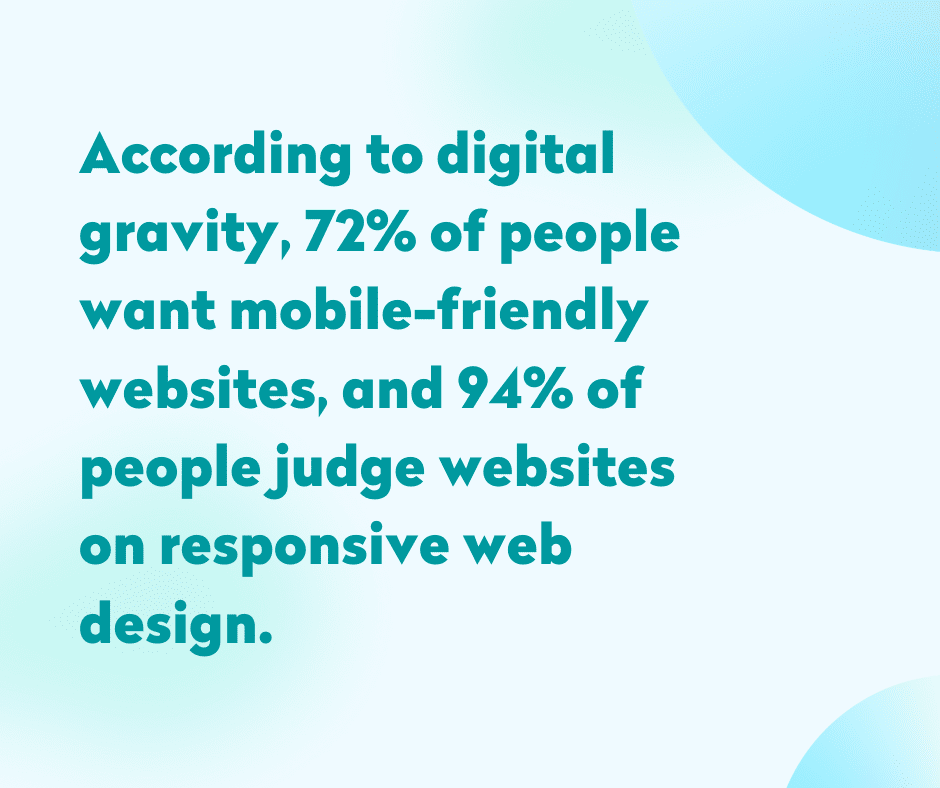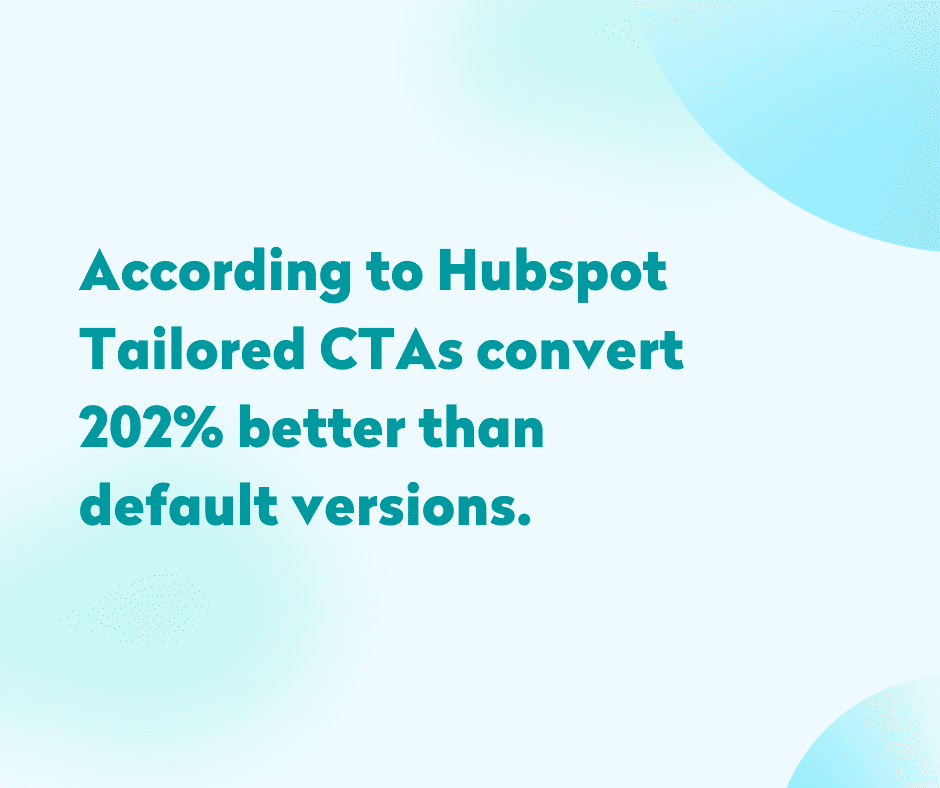Your website is the anchor to your digital marketing efforts. Designing a great website user experience requires an understanding of the problems different users have and how it provides solutions to them. Here are some key considerations you should be making:
Give your content room to breathe
White space is essential for good design. It makes your content readable and enables the visitor to focus on the key messages and information presented to them. This could be a CTA, product description, or a contact form to fill out.
When we say white space, it doesn’t need to be white. The white space is the space between content on your website pages to give it the room it needs to stand out and to be digested with ease.
White space also gives your website a fresh and modern look. If you’re struggling to fit the content you need on a page while considering the white space, then the key is to ask: is all the information necessary? It’s important to try and find the right balance and to think about what the user wants, and how it will affect the user.

Optimise your website for speed
It’s extremely frustrating when a web page takes too long to load. As websites have developed over the years, users now expect fast results and website load time, or they will simply go somewhere else to look for what they need. If your website is struggling to load, you will likely see an increase in your bounce rates. But how can you speed up your website loading time?
Google offers free tools to check your page load time and has some great advice on how you can improve it. The size of your images can also massively impact your website’s speed. To reduce the time it takes for a page to load, ensure you have the correct sized images and that you have chosen the correct format and have compressed the images before uploading. Plug-ins can have a huge impact on the loading time of pages on your site too. If you have a site that is stuffed with plugins (as is often the case with a template or themed sites), then it’s likely that these are causing your site to run slowly.

Consistency is key
Your website should look professional, on-brand, and most importantly, consistent. Everything should have a coherent design to ensure consistency across your site. Consider how consistent your heading sizes, fonts, colours, button sizes, and styles are. Dramatic style changes from one page to another can throw a user and can make them feel lost and a little confused, resulting in them losing trust in you.
Be mobile friendly
With the rise of mobile and tablet users, it’s more important now than ever to ensure your website is responsive. Having an unresponsive website will dramatically impact your visitors’ user experience, and sure enough, the bounce rate will be higher if they can’t find or see what they need with ease. Not only is having a responsive website essential for user experience but Google has started penalizing sites that aren’t optimised, making this need even more necessary.

Visible calls to action
What would your reaction be if you landed on a page and there were no clear next steps to take? Well, you would probably leave the website and look elsewhere. It’s for this exact reason that having clear CTAs (calls to action) are crucial. Customers are accustomed to following steps and visual cues, so ensure your website has actions for users to take. Even better, why not tailor your CTAs to your visitors’ needs and increase your conversion rate at the same time?

So remember, for smooth UX you need to make sure:
- The design has white space and room to breathe
- You’re optimised for speed
- You’re on-brand with consistent style & themes throughout
- You’re mobile friendly
- Your calls to action are clear!
This article has been taken from our latest white paper “Make Your Website Work Harder For you”. You can read it in full here.
If you’d like to speak to one of our experts about how to improve your website’s UX, why not get in touch below? We’d love to hear from you!